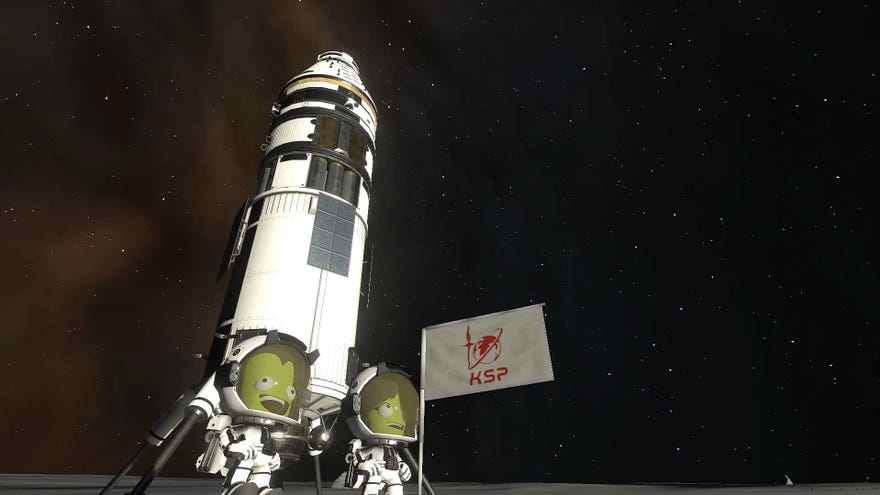Kerbal Space Program 2 will let you crash into further away planets than ever before
Strand Kerbals in whole new solar systems
One of the most satisfying things in the first Kerbal Space Program was when you'd reached orbit, and could then start plotting courses and interceptions with other objects throughout its fictional solar system. Kerbal Space Program 2 wants to up the ante somewhat by upping the scale and allowing for interstellar travel.
A new 15-minute video from its developers talks about the challenges of simulating interstellar travel - from the engine changes required to support such vast scale, to the reasons for even wanting to.
"To me the most compelling reason to make KSP2 interstellar was to create unknown regions for exploration," says Nate Simpson, the game's Creative Director. "The Kerbolar system is a known quantity. We can't think of anything more exciting than the unknown, and we think discovery as an impetus for flight is maybe the strongest possible driving force."
The increase in scale of the galaxy also leads to an increase in scale for ships and their engines. One developer talks about the ability to build "motherships", ships so big that they have smaller ships attached to them. You can use these to visit distant solar systems and then detach the smaller ships to explore and conduct experiments on the individual planets.
While a lot of this obviously offers more 'endgame' activities for players who have conquered the starting solar system, one developer also mentions that increasing the distances doesn't necessarily increase the complexity. If you can use the in-game tools to plot a route and land on the Mun, then the principles are the same to allow you to do that for a planet in a different solar system many lightyears away. The devs have previously spoken about the game's tutorials, too.
The video still shows only pre-alpha footage, but the whole video is encouraging given KSP2's fairly rocky start in development. Take-Two reportedly wanted to buy the studio they'd commissioned to make the game, and when its founders wouldn't sell, they allegedly took the project away from them and hired most the staff anyway.


